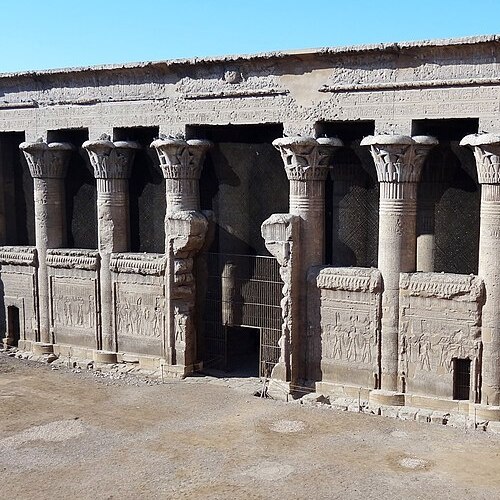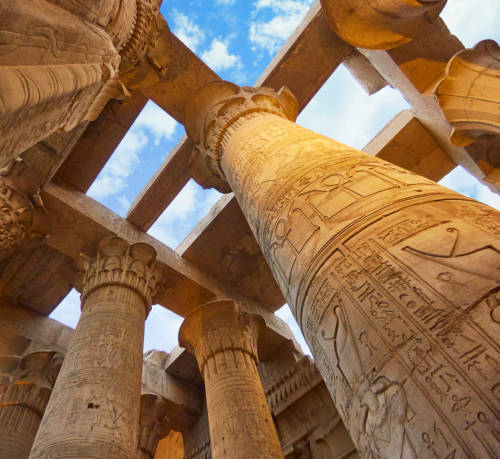No other nation in the world says ‘Welcome’ as often as the Egyptians, and every time, they mean it. While the ancient civilization of Egypt continues to amaze, contemporary Egyptians are equally remarkable.
Khnum Temple
About The Temple
The Temple of Khnum in Kom Ombo is a fascinating yet often overlooked site, shadowed by the more famous double temple dedicated to Sobek and Horus. However, for those who take the time to explore its history and significance, the Temple of Khnum offers a deep dive into the local religious practices and beliefs that shaped this region.
Khnum, the ram-headed god of creation and fertility, was worshipped as the one who controlled the waters of the Nile, shaping human beings from clay on his potter’s wheel. His association with the Nile’s life-giving waters made him particularly revered in Kom Ombo, where the river’s floodwaters were essential to the survival and prosperity of the people.
Though the temple dedicated to Khnum is not as grand or well-preserved as others in the area, it holds great historical value. Built during the later Ptolemaic period, the temple stands as a tribute to the enduring worship of Khnum, whose influence stretched throughout ancient Egypt. The architecture of the temple still shows glimpses of its former glory, with portions of the stone walls featuring beautifully carved hieroglyphics and reliefs. These depict Khnum in various scenes, often alongside other deities like Heket, the goddess of childbirth, and Satet, who helped control the annual floods.
One of the most captivating aspects of the temple is its alignment with the natural world. Positioned near the Nile, the temple’s layout was designed to allow worshippers to feel directly connected to the river, reinforcing Khnum’s role as the bringer of fertility and life. Rituals would have been performed here during the annual flood season, with offerings given to ensure the god’s favor and the abundance of the harvest.
Though it doesn’t draw the same crowds as Kom Ombo’s main temple complex, the Khnum Temple offers a more intimate and reflective experience. Exploring its ruins gives you a sense of the localized religious practices that shaped daily life in ancient Egypt. Walking through its worn but sacred halls, you can almost imagine the ancient prayers that once echoed within, calling for the Nile to rise and sustain the land.
In the end, the Temple of Khnum is a reminder that in ancient Egypt, every town, no matter how small, had its own unique relationship with the divine. The people of Kom Ombo may have worshipped many gods, but Khnum’s temple stands as a testament to their deep respect for the forces of creation and the vital importance of the Nile in their lives. While it may not be the grandest structure in Egypt, the Temple of Khnum offers a glimpse into the spiritual heart of this ancient community, forever tied to the river that gave them life.
Created On March 18, 2020
Updated On Sept 23, 2024
KOM OMBO Travel Guide



